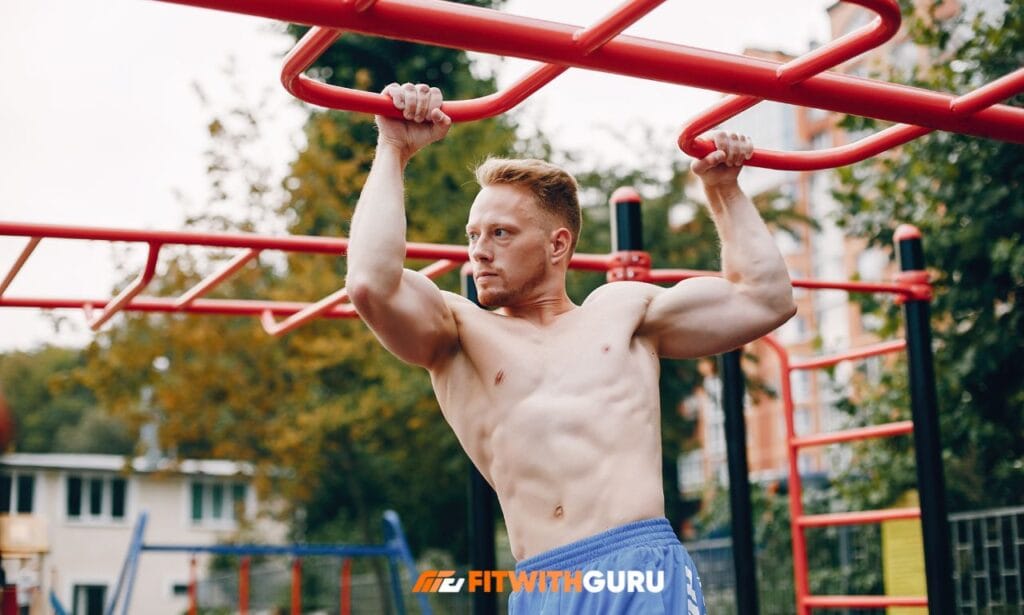A 90-day calisthenics challenge represents one of the most effective ways to completely transform your physique without setting foot in a gym. This comprehensive guide will walk you through everything you need to know about starting and succeeding with a bodyweight training program that delivers real results.
Whether you’re a complete beginner or someone looking to take your fitness to the next level, the next three months could be the most transformative period of your life.
What Makes a 90 Day Calisthenics Challenge So Effective?
The beauty of a calisthenics challenge lies in its simplicity and accessibility. You don’t need expensive equipment, gym memberships, or complicated machines to build the body you’ve always wanted.
Your own bodyweight becomes the resistance tool that sculpts muscle, burns fat, and builds functional strength. Research shows that 90 days provides the perfect timeframe for establishing lasting habits while seeing dramatic physical changes.
The first 30 days focus on building foundational strength and perfecting form, the second month amplifies intensity. It introduces progressive overload, and the final 30 days push you to achieve results you never thought possible.
This 90-day workout plan creates sustainable change because it gives your body enough time to adapt, grow, and transform without the burnout that comes from shorter, more intense programs.
Setting Up Your 90 Day Transformation Workout Plan at Home
Creating an effective home workout space requires minimal investment but maximum commitment. You’ll need a pull-up bar, parallel bars or sturdy chairs for dips, and a yoga mat for floor exercises. That’s literally everything required to complete this entire challenge.
The 90-day transformation workout plan at home follows a structured progression that builds upon itself week after week. Week 1-2 focuses on mastering basic movements with proper form—think standard push-ups, bodyweight squats, planks, and assisted pull-ups.
Weeks 3-4 introduce variations and increased volume, pushing you from 3 sets to 4 or 5 sets of each exercise. By month two, you’re tackling advanced variations like diamond push-ups, pistol squats, and archer pull-ups.
The final month incorporates explosive movements, holds, and combinations that showcase your newfound strength and coordination.
Essential Equipment and Space Requirements
Your workout space doesn’t need to be elaborate. A 6×6 foot area in your living room, bedroom, or garage provides ample space for most calisthenics movements. Beyond the pull-up bar, consider adding resistance bands for assisted movements and added resistance during the later phases.
Parallettes or push-up bars protect your wrists during high-volume sessions and allow for a greater range of motion. A simple timer or smartphone app helps track rest periods and maintain workout intensity.

The Complete Weekly Structure for Your Calisthenics Challenge
Consistency beats intensity every single time in a 90-day program.
Your weekly schedule should balance pushing movements, pulling movements, leg work, and core development while allowing adequate recovery.
Monday focuses on push exercises like push-up variations, dips, and pike push-ups.
Tuesday targets pulling movements including pull-ups, rows, and chin-ups.
Wednesday hits legs and core with squats, lunges, planks, and leg raises.
Thursday serves as rest or active recovery with light stretching, walking, or yoga.
Friday delivers a full body circuit with burpees, mountain climbers, and jump squats.
Saturday emphasizes skill work like handstand practice, L-sits, and muscle-up progressions.
Sunday provides complete recovery to let your muscles repair and grow.
This structure ensures you’re hitting every muscle group twice per week while preventing overtraining.
The rest days aren’t optional—they’re when your muscles actually grow and strengthen.
Progressive Overload: The Key to Continuous Improvement
Simply repeating the same workouts for 90 days won’t deliver transformation. Progressive overload means consistently challenging your muscles with increased difficulty. This happens through adding reps, increasing sets, decreasing rest time, or advancing to harder exercise variations.
For example, if you start week one doing 10 regular push-ups, week four might have you performing 20. Week eight introduces decline push-ups, and week twelve has you conquering one-arm push-up progressions. Track every workout in a notebook or app to ensure you’re genuinely progressing rather than just spinning your wheels.
Nutrition Strategies to Maximize Your 90-Day Workout Plan
You absolutely cannot out-train a poor diet during this calisthenics challenge. Your nutrition determines whether you build lean muscle, lose excess fat, or simply maintain your current physique. Protein becomes your best friend—aim for 0.8 to 1 gram per pound of bodyweight daily to support muscle recovery and growth.
Complex carbohydrates like oats, sweet potatoes, and brown rice fuel your intense workouts and replenish glycogen stores. Healthy fats from avocados, nuts, and olive oil support hormone production and overall health.
Hydration matters more than most people realize—drink at least half your bodyweight in ounces daily, more on workout days. Calculate your caloric needs based on your goals. Eat in a slight surplus of 200-300 calories above maintenance to build muscle.Or choose a moderate deficit of 300-500 calories below to reveal definition.
Pre and Post-Workout Nutrition Timing
What you eat around your workouts significantly impacts performance and recovery.
Consume a balanced meal with protein and carbs 2-3 hours before training.
Or grab a lighter snack 30-60 minutes beforehand if needed.
Post-workout, prioritize protein within 2 hours to maximize muscle protein synthesis.
A simple chicken breast with rice, a protein shake with banana, or Greek yogurt with berries all work perfectly.
Common Mistakes That Derail Your 90 Day Transformation Workout Plan at Home
The enthusiasm at the beginning of a calisthenics challenge often leads people to make critical errors. Going too hard too fast ranks as the number one mistake. Starting with advanced movements before mastering basics leads to injury and burnout.
Poor form sacrifices long-term gains for short-term ego boosts. A proper push-up with full range of motion beats half-rep attempts at harder variations every time. Neglecting rest and recovery causes overtraining syndrome, characterized by decreased performance, persistent fatigue, and increased injury risk.
Inconsistent training destroys momentum—missing workouts breaks the habit formation crucial for long-term success. Unrealistic expectations create disappointment when week two doesn’t reveal six-pack abs. Remember, transformation happens gradually, then suddenly as all your consistent efforts compound.
Injury Prevention and Proper Form Guidelines
Warming up isn’t optional—spend 5-10 minutes increasing heart rate and lubricating joints before intense work. Dynamic stretching like arm circles, leg swings, and torso twists, prepares your body better than static stretching.
Listen to your body’s signals, differentiating between productive discomfort and pain indicating injury. Sharp, shooting pain means stop immediately. Muscle fatigue and burning means push through intelligently. Film yourself performing exercises to identify form breakdowns you can’t feel in the moment.
Tracking Progress Beyond the Scale
The scale tells an incomplete story during your 90 days workout plan. Muscle weighs more than fat by volume, so you might actually gain weight while dramatically improving body composition.
Take progress photos every two weeks in consistent lighting, same time of day, wearing minimal clothing. These visual records reveal changes you won’t notice in the mirror daily.
Measure key body parts—chest, waist, hips, arms, and thighs—monthly to track where you’re gaining muscle and losing fat. Performance metrics matter most.
How many pull-ups can you complete now versus week one?
Has your plank hold time doubled? Can you perform exercises that seemed impossible at the start?
Journaling Your Journey
Maintaining a detailed workout journal transforms your calisthenics challenge from random activity into a systematic progression. Record exercises, sets, reps, rest periods, how you felt, energy levels, and any modifications made.
This data reveals patterns—maybe you perform better in morning sessions, or certain foods improve workout quality. The psychological benefit of seeing your written progress creates motivation during difficult weeks.
Advanced Techniques for Weeks 9-12
The final month separates those who complete the challenge from those who truly transform. Introduce training techniques that maximize muscle engagement and push past plateaus. Time under tension increases by slowing down movements—take 3 seconds on the lowering phase, pause at the bottom, then explode upward.
Drop sets push muscles to complete failure by immediately switching to an easier variation when you can’t complete another rep. Supersets pair complementary exercises with minimal rest, like push-ups immediately followed by pull-ups.
Isometric holds build incredible strength—adding 10-30 second pauses at the hardest point of each movement recruits more muscle fibers.
Mental Strategies for Completing Your Calisthenics Challenge
Physical transformation begins with mental commitment during this 90 day transformation workout plan at home. Motivation gets you started, but discipline keeps you consistent when motivation disappears. Create accountability through workout partners, social media documentation, or joining online calisthenics communities.
Establish non-negotiable workout times rather than fitting exercise in “when convenient.” It never becomes convenient without scheduling. Visualize your transformation daily, seeing yourself achieving goals before they manifest physically.
Celebrate small wins: your first unassisted pull-up, holding a plank for 60 seconds, or completing a week without missing workouts.
These victories build momentum and confidence that carry you through challenging periods. When you don’t feel like training, commit to just showing up and doing 10 minutes. You’ll almost always continue once you start.

Frequently Asked Questions
Can beginners really complete a 90 day calisthenics challenge?
Absolutely, and beginners often see the most dramatic results. Start with modified versions of exercises—knee push-ups instead of regular, assisted pull-ups with bands, and wall planks before floor planks. The program scales to any fitness level by adjusting volume and exercise difficulty. Focus on perfect form over impressive numbers during the first month, and you’ll build the foundation for incredible progress.
How many days per week should I train during this 90-day workout plan?
Five to six training days per week produce optimal results when following a structured program. This frequency allows you to adequately stimulate all muscle groups while incorporating necessary rest days. Beginners might start with 4 days weekly and progress to 5-6 as adaptation occurs. Never train the same muscle group on consecutive days—respect the recovery process that builds strength.
Will I build muscle or just get toned with calisthenics?
You’ll absolutely build significant muscle mass with progressive calisthenics training. Bodyweight exercises create enough resistance to stimulate hypertrophy when performed with proper volume and intensity. Building muscle and losing fat exposes the muscular definition underlying; “toning” isn’t a true physiological process. Many advanced calisthenics athletes have physiques rivaling traditional bodybuilders, proving bodyweight training builds serious size.
What if I miss a few days during my 90 day transformation workout plan at home?
Life happens, and perfection isn’t required for transformation. If you miss 1-2 days, simply resume where you left off without trying to “make up” missed workouts. Attempting to compensate by doubling up leads to overtraining and injury. The key is getting back on track immediately rather than letting a small setback derail your entire challenge. Aim for 80% adherence—if you complete 72 of the 90 days, you’ll still achieve remarkable results.
Do I need supplements to succeed in this calisthenics challenge?
Supplements aren’t necessary, but can support your goals when nutrition falls short. Protein powder offers convenient, cost-effective protein to meet daily requirements. Creatine monohydrate enhances strength and power output with extensive safety research. A quality multivitamin fills potential nutritional gaps in your diet. However, whole foods, adequate sleep, and consistent training matter infinitely more than any supplement. Save your money and invest in quality food before purchasing unnecessary products.
Conclusion
Embarking on a 90-day calisthenics challenge represents a commitment to yourself that extends far beyond physical transformation. Over the next three months, you’ll discover mental resilience, discipline, and capabilities you never knew existed.
Your body will transform through consistent effort, progressive overload, and intelligent recovery strategies. The 90-day workout plan outlined here provides the roadmap, but your daily actions determine the destination.
Every push-up, pull-up, and squat compounds into results that seem impossible from your current vantage point. Start where you are, use what you have, and do what you can.
This simple philosophy, applied consistently, creates extraordinary outcomes. The person you’ll become through completing this 90-day transformation workout plan at home extends beyond the physical changes in the mirror.
You’ll build confidence, establish lifelong fitness habits, and prove to yourself that transformation is always possible with commitment. Your 90-day journey starts now—not tomorrow, not next Monday, but with your very next workout.
The body you want is built one rep at a time, one day at a time, one choice at a time. Make this challenge the catalyst that transforms not just your body, but your entire approach to health, fitness, and personal growth.

